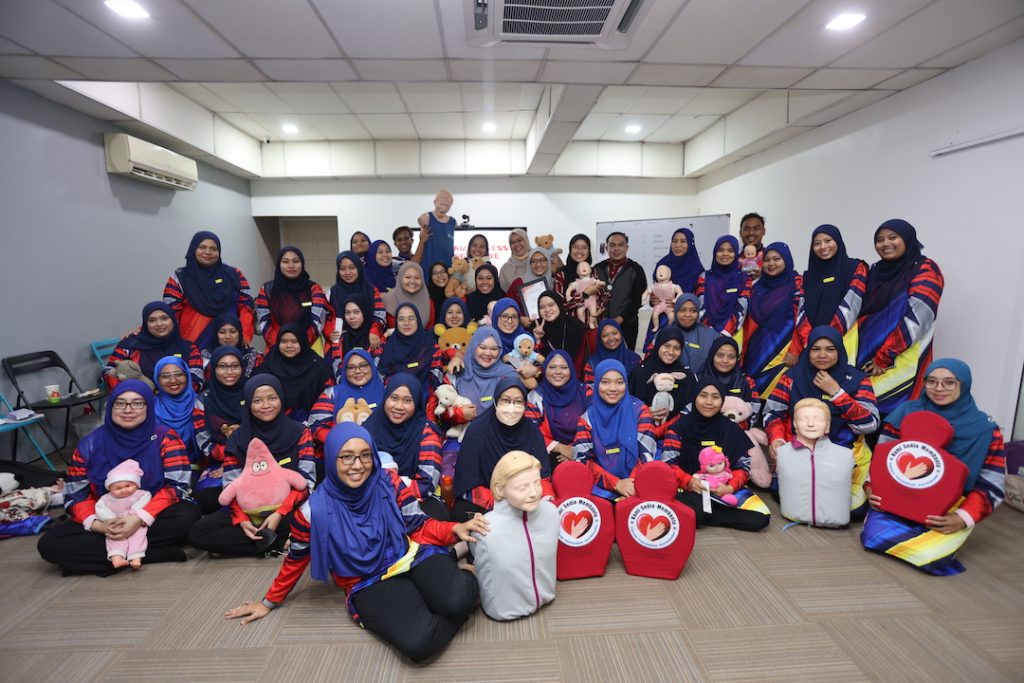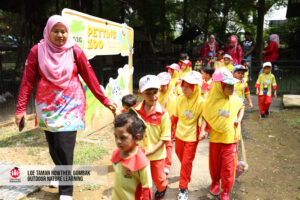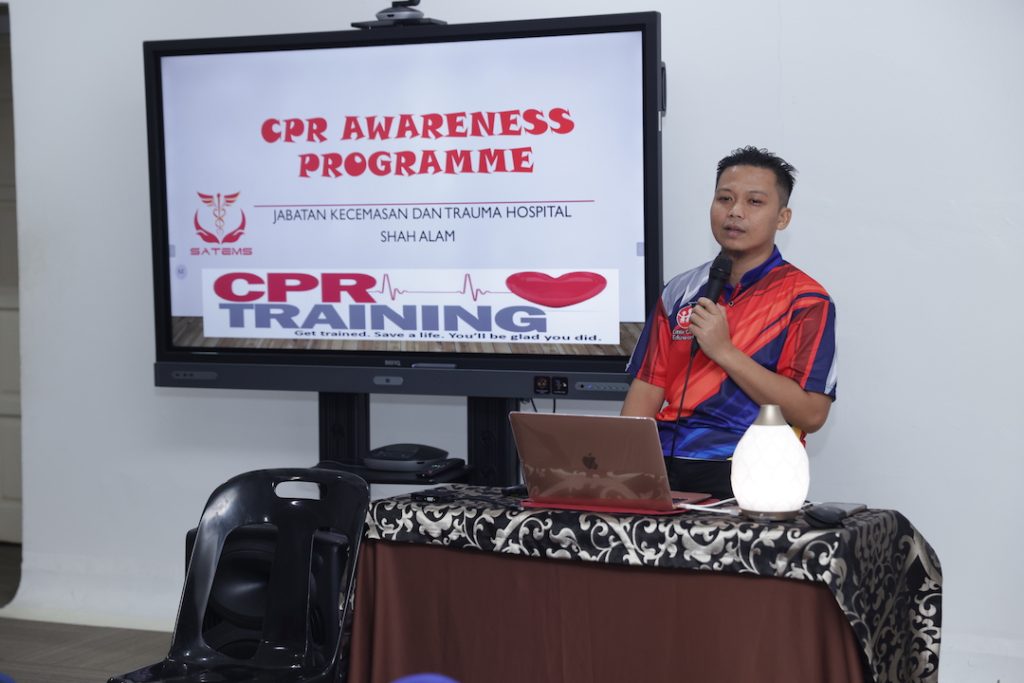
Things can happen, unexpectedly. How do you react when someone near you chokes, or cannot breathe or even worst, you found someone unconscious? What should you do? How should you react? With proper knowledge, one can save a life.
On the 5th of November 2022, Little Ones Eduworld Sdn. Bhd. organised an event for teachers in Klang Valley call CPR Awareness Programme. A total of 40 teachers and staff from HQ participated in this programme. The trainers were specialists, doctors and paramedics from the Emergency Department of Hospital Shah Alam.
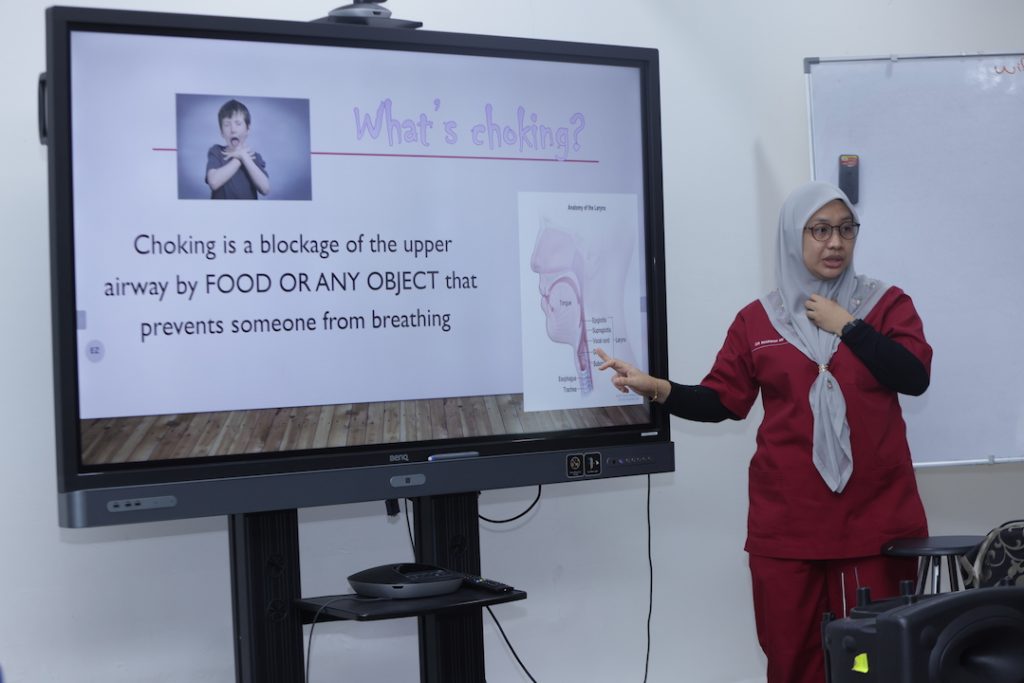
The programme started with a talk from Dr Maryam on Basic Life Support which was divided into two categories – i) Infant Chocking and infant CPR ii) Adult choking and adult CPR. Right after the talk, they did a demo for us, on what to do when the infant is choking. An infant who is choking is unable to cry, cough, make noise, or breathe.
When you identify a baby choking, you need to give five back blows in step one. How to do it? Hold the baby face-down along your thigh with their head lower than their bottom. Hit them firmly on their back between the shoulder blades up to five times.

Next step, by using another hand, turn the baby around facing upwards. This is called a ‘sandwich’. Once the baby facing upward, assess the situation, if the baby still looks like they are choking, give them five chest thrusts with your two fingers. Place two fingers in the middle of their chest just below the nipples. Push sharply downwards up to five times.
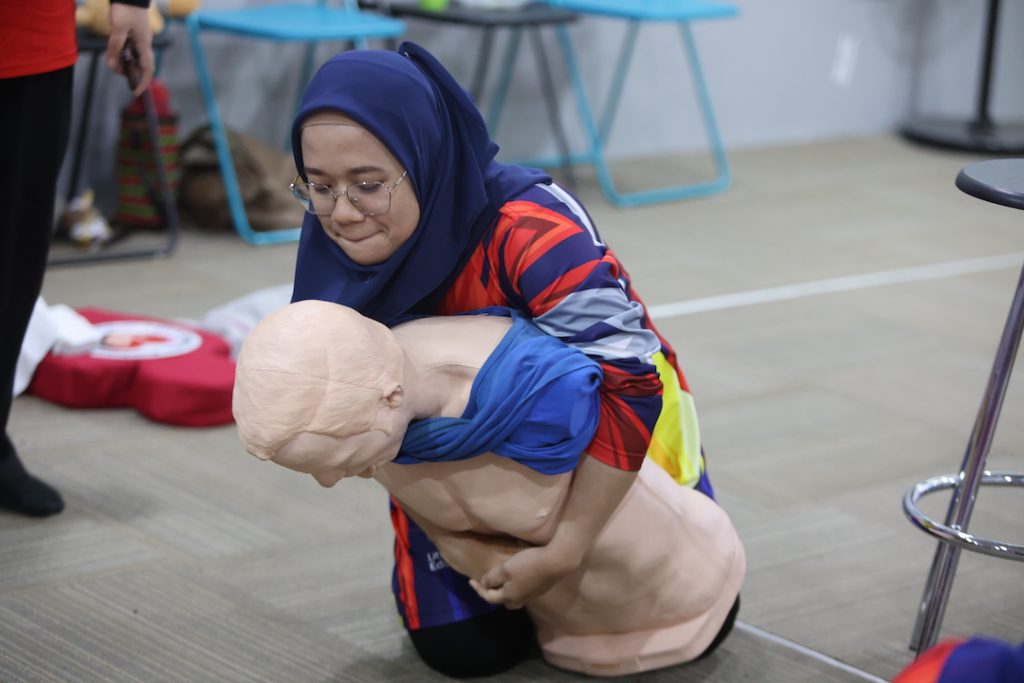
Repeat step 1 if the blockage does not dislodge, but if you see the infant is not responsive, start doing CPR.
Before you perform CPR, make sure the surrounding is safe. Then try to confirm whether they can respond or not. For infants, tap or flick the bottom of their feet, and if no response, shout for help. In public areas, be specific about which person to help, and what to do. Ask them to call 999, and get back to you once they made the call.
Next, check for breathing and open the airway. Gently lift their chin, and hold their head. Look, listen and feel for breathing no longer than 10 seconds. If there is no sign of breathing, give 5 rescue breaths until the chest rise.
If still no sign of breathing, check the sign of a pulse. For infants, we check a brachial pulse. If still do not have any sign of life, start with chest compression immediately.
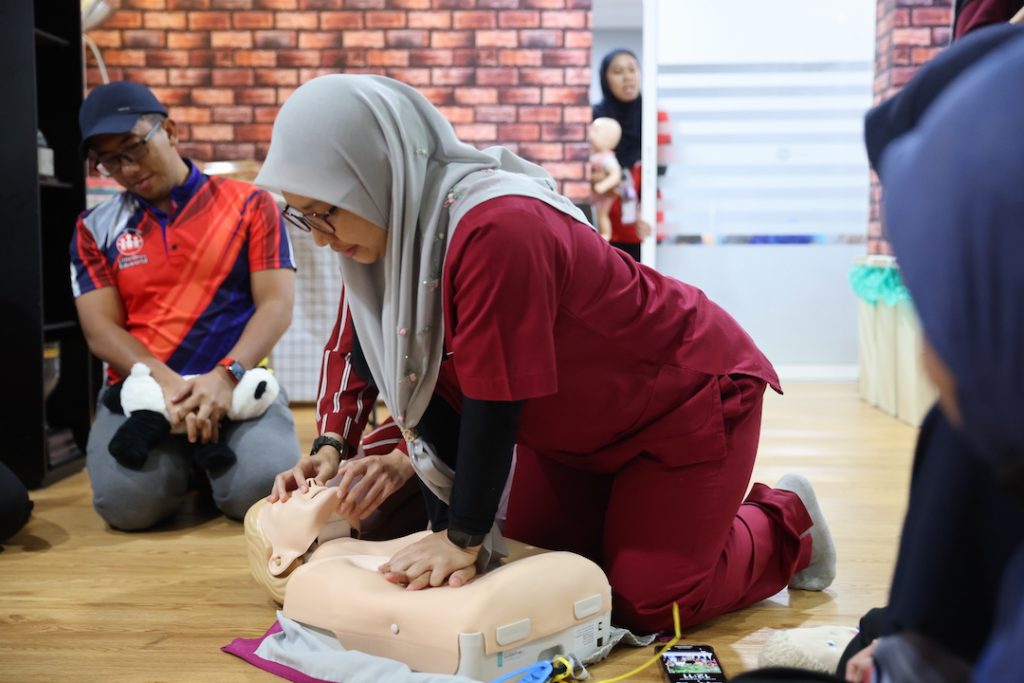
Chest compression is the most important part of CPR.
A general guide for chest compression
- Find the chest compression point
- For baby/infant, use only 2 fingers.
- Push down 4cm for a baby/infant and 5cm for the child (approximately one-third of the chest diameter)
- Release the pressure, then rapidly repeat at a rate of about 100-120 compressions a minute
- After 30 compressions, tilt the head, lift the chin and give 2 breaths. (Known as “30:2”. Aim for 5 sets of 30:2 in about 2 minutes)
Keep going with 30 compressions to 2 breaths until
- the person recovers – start moving, breathing normally, coughing, crying, or responding. Put them in a recovery position.
- Impossible for you to continue because you are exhausted
- Ambulance arrives and a paramedic takes over or tells you to stop.
As for the summary, do remember the DRSABC action plan to help you remember the steps.
| Letter | Representing | What to do |
| D | Danger | Ensure that the baby/infant and all people in the area are safe. Remove the danger or the baby/infant. |
| R | Response | Look for a response from the baby/infant — check for a response to a loud voice, or gently squeeze their shoulders. Do not shake the baby/infant. |
| S | Send for help | If there is no response, phone triple zero (000) or ask another person to call. Do not leave the patient. |
| A | Airway | Gently lift the baby’s chin to a neutral position (with the head and neck in line, not tilted). Check in the mouth for any blockages, such as vomit, an object or loose teeth, and clear them out with your finger. |
| B | Breathing | Check if the baby/infant is breathing abnormally or not breathing at all after 10 seconds. If they are breathing normally, place them in recovery and stay with them. |
| C | CPR | If they are still not breathing normally, start CPR. Chest compressions are the most important part of CPR. Start chest compressions as soon as possible after calling for help. |
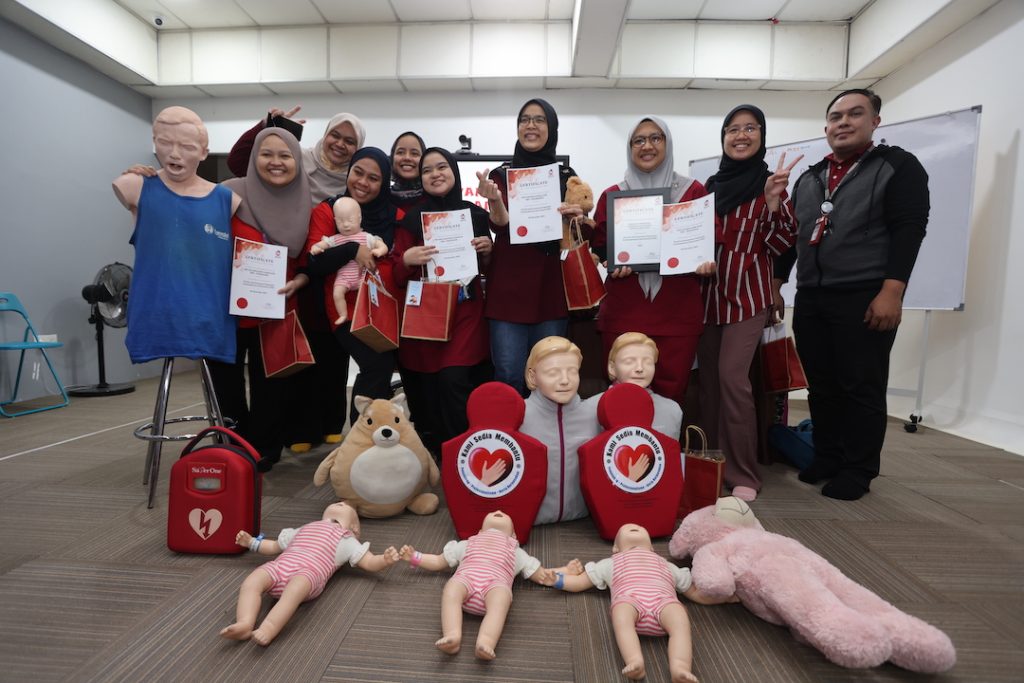
We hope this event can prepare our teachers and staff on what to do when they happen to be in unexpected situations. Thank you, team, from the Emergency Department of Hospital Shah Alam for the sharing session. As per they wrote in their notes – Get trained, save a life, and you will be glad you did.
